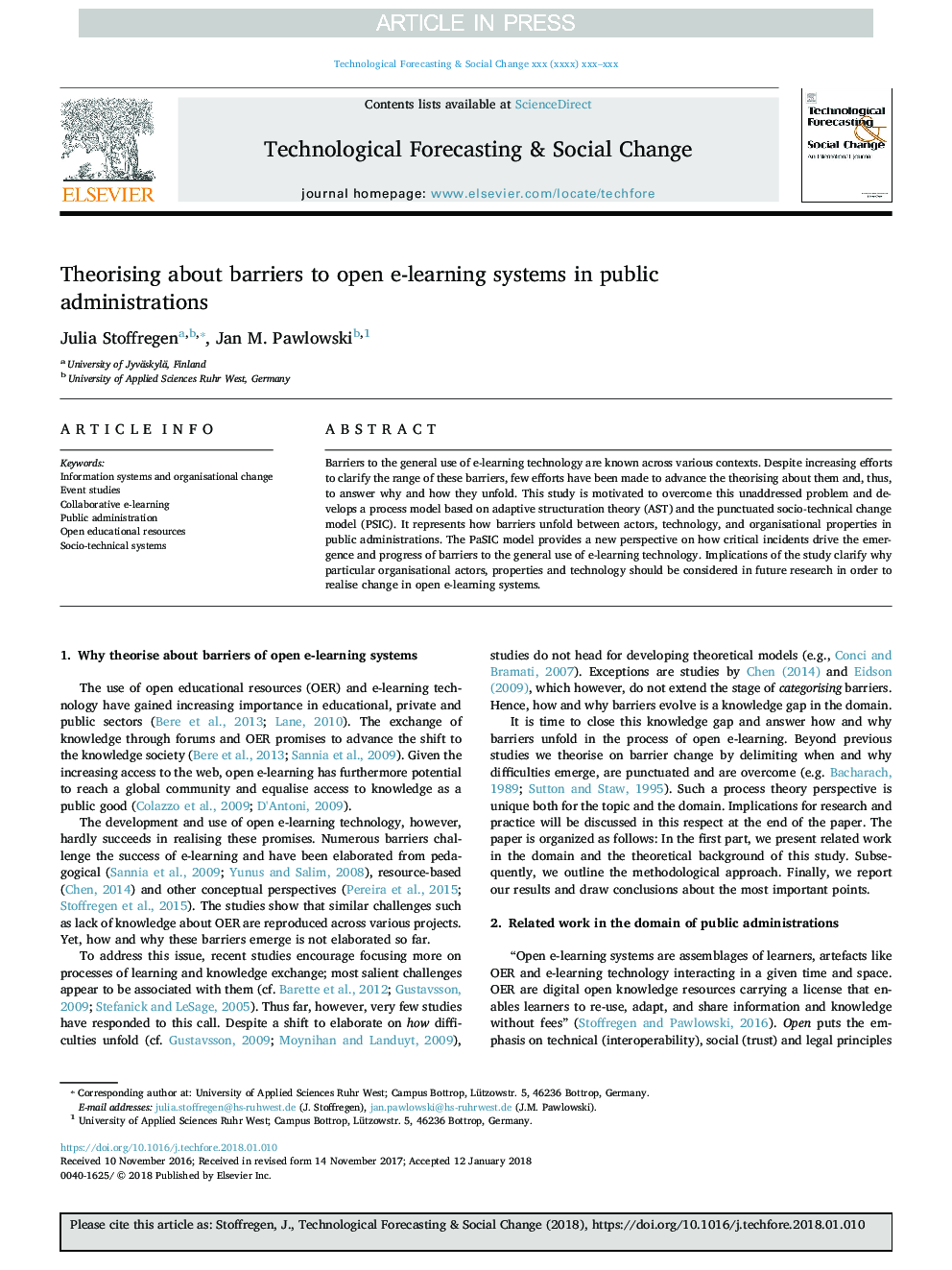| Article ID | Journal | Published Year | Pages | File Type |
|---|---|---|---|---|
| 7255265 | Technological Forecasting and Social Change | 2018 | 11 Pages |
Abstract
Barriers to the general use of e-learning technology are known across various contexts. Despite increasing efforts to clarify the range of these barriers, few efforts have been made to advance the theorising about them and, thus, to answer why and how they unfold. This study is motivated to overcome this unaddressed problem and develops a process model based on adaptive structuration theory (AST) and the punctuated socio-technical change model (PSIC). It represents how barriers unfold between actors, technology, and organisational properties in public administrations. The PaSIC model provides a new perspective on how critical incidents drive the emergence and progress of barriers to the general use of e-learning technology. Implications of the study clarify why particular organisational actors, properties and technology should be considered in future research in order to realise change in open e-learning systems.
Related Topics
Social Sciences and Humanities
Business, Management and Accounting
Business and International Management
Authors
Julia Stoffregen, Jan M. Pawlowski,
